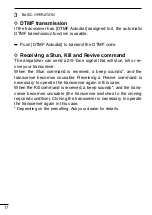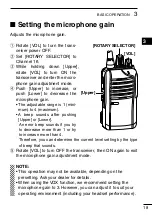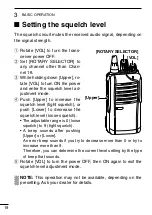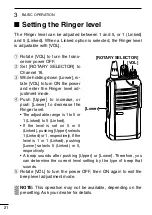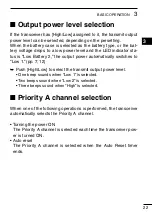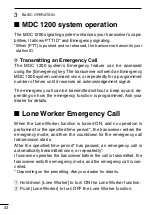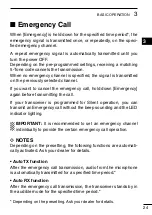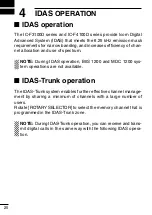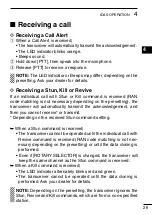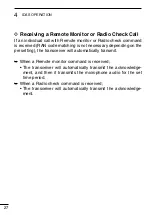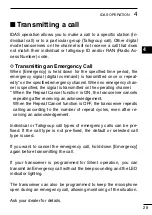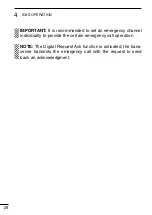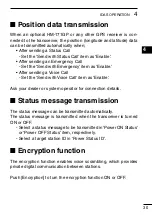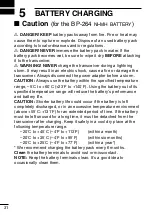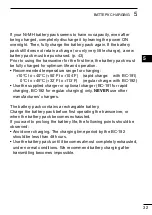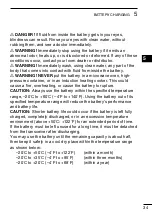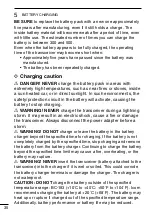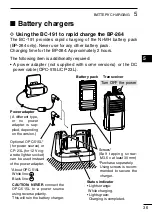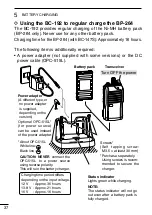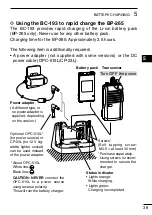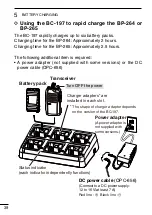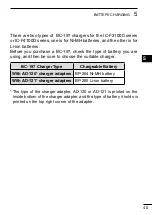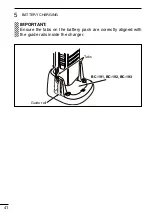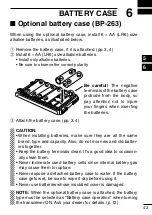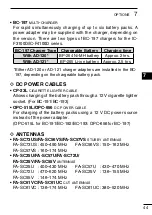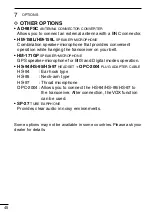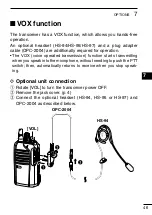
31
BATTERY CHARGING
■
Caution
(for the BP-264
n
i
-
mh
battery
)
R
DANGER! KEEP battery packs away from fire. Fire or heat may
cause them to rupture or explode. Dispose of an used battery pack
according to local ordinances and/or regulations.
R
DANGER! NEVER immerse the battery pack in water. If the
battery pack becomes wet, be sure to wipe it dry
BEFORE attaching
it to the transceiver.
R
WARNING! NEVER charge the transceiver during a lightning
storm. It may result in an electric shock, cause a fire or damage the
transceiver. Always disconnect the power adapter before a storm.
CAUTION: Always use the battery within the specified temperature
range, –5˚C to +60˚C (+23˚F to +140˚F). Using the battery out of its
specified temperature range will reduce the battery’s performance
and battery life.
CAUTION: Shorter battery life could occur if the battery is left
completely discharged, or in an excessive temperature environment
(above +55˚C: +131˚F) for an extended period of time. If the battery
must be left unused for a long time, it must be detached from the
transceiver after charging. Keep it safely in a cool dry place at the
following temperature range:
–20˚C to +45˚C (–4˚F to +113˚F)
(within a month)
–20˚C to +35˚C (–4˚F to +95˚F)
(within six months)
–20˚C to +25˚C (–4˚F to +77˚F)
(within a year*)
* We recommend charging the battery pack every 6 months.
Clean the battery terminals to avoid rust or misscontact.
NOTE: Keep the battery terminals clean. It's a good idea to
occasionally clean them.
5
Summary of Contents for IC-F3101D
Page 62: ...MEMO...
Page 63: ...MEMO...

